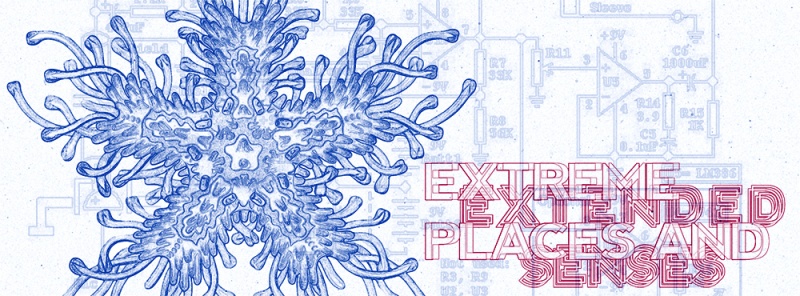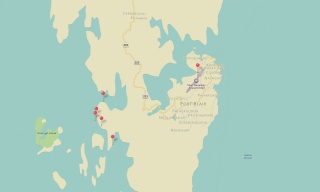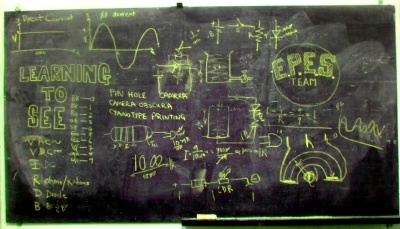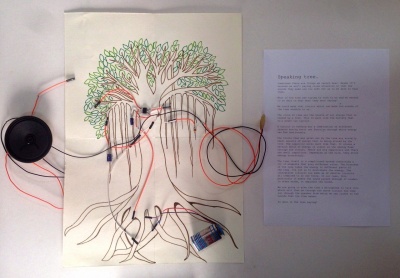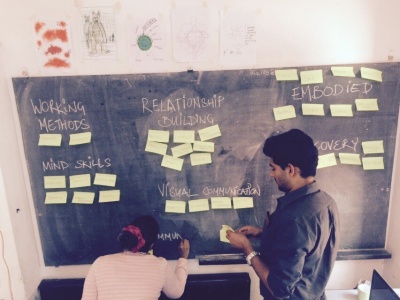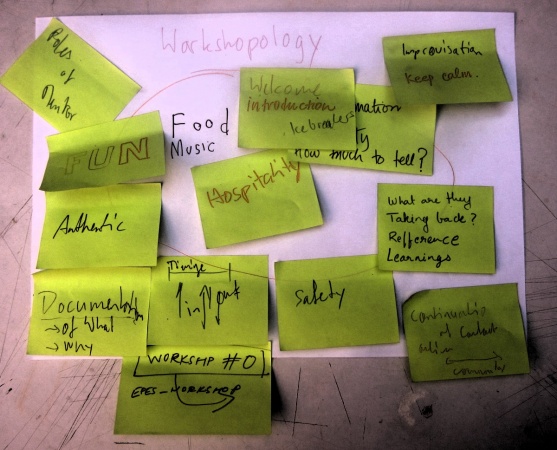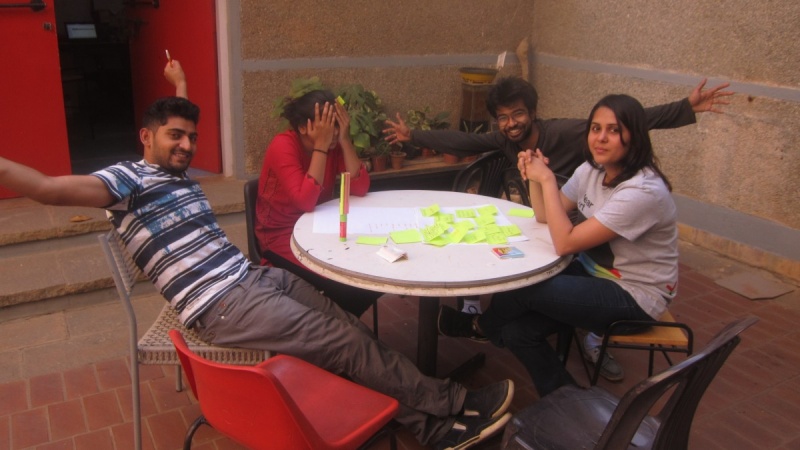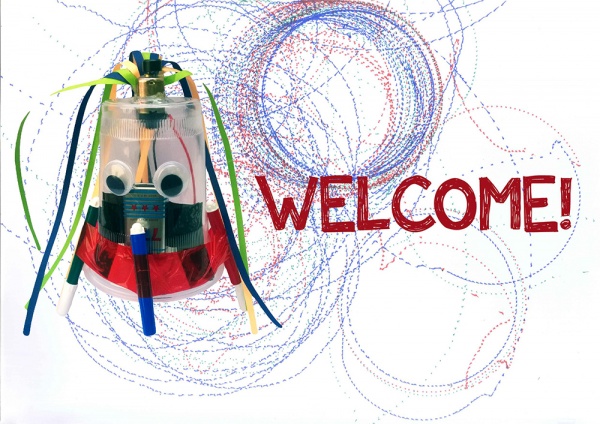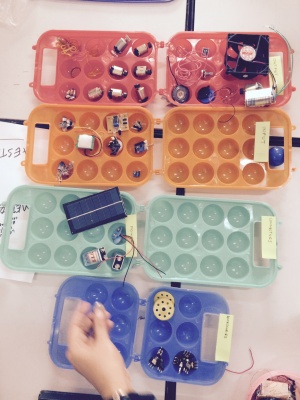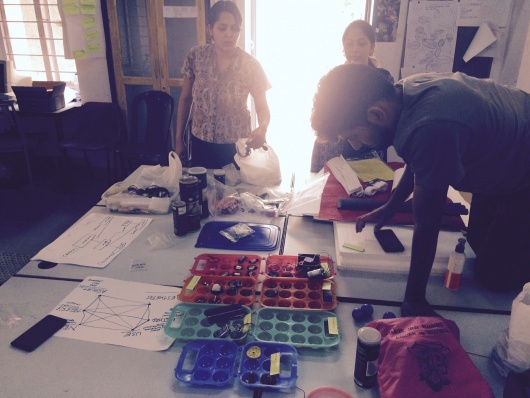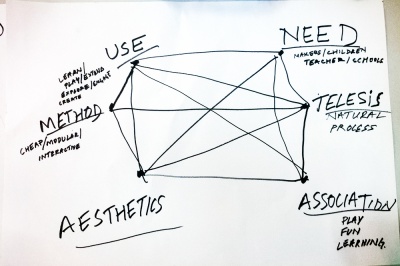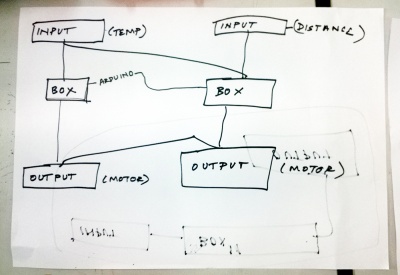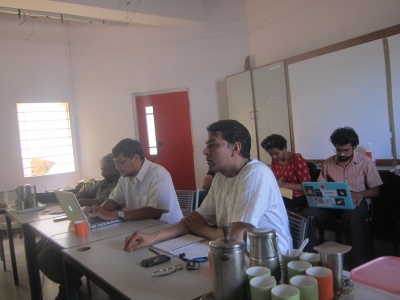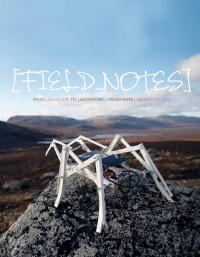Extreme Places and Extended Senses
Contents
- 1 Project- Extreme Places and Extended Senses
- 2 Project Timeline
- 3 People
- 4 Notes from earlier Communications
- 5 List of Materials for the Andaman Trip
- 6 Andaman Trip
- 7 EPES Electronics Intro
- 8 Explaining the Amplifier Circuit
- 9 The Exploration / Making Kit Comparison Chart
- 10 Brainstorming Extreme Places
- 11 Ekalavya Toolkit
- 12 EPES DIY KIT
- 13 Mapping Skills
- 14 EPES Workshopology
- 15 Seminars
- 16 Suggested Readings and Viewings
- 17 Learning, Knowing and Education
- 18 Designerly Ways
- 19 Play & Games
- 20 further links
Project- Extreme Places and Extended Senses
- What does 'extended senses' mean?
- What is an 'extreme place'?
- How can extreme environments extend our senses and stoke our creativity?
This project explores ways of extending senses to make new meanings and perceptions of our environment. In practice, this would entail using technological tools such as sensors and handmade scientific equipment to alter and broaden our perception of the world. We will borrow from D.I.Y /D.I.W.O (Do it with others) practitioners and build our own tools for extending our senses. We will look at artistic approaches to field trips, extreme spaces and altering perceptions. One of the practical outcomes of this project will be collaboration with educators to implement our explorations in the educational context (for eg: toolkits and labs). In this project we will work with scientists, artists(visual/sound/performance) and educators. This project is ideal for students interested in the arts, film, visual communication, product design. We begin this exploration on the onset itself of the project with a weeklong expedition to our first Extreme Environment - The Andamans Islands (The Andaman and Nicobar Environmental Team).
Project Timeline
People
Notes from earlier Communications
1) Dataloggers and sensors(PASCO) were used as part of mobile lab concept with middle school students for study of soil and water quality in different contexts.
practical concerns: Carrying the equipment was cumbersome and ofcourse expensive. Walking on the rocky shoreline was challenging with these delicate instruments. These are useful in a lab scenario pedagogical: data was collected, graphs drawn and interpreted; however as a facilitator always felt a lack of play or story telling missing because the data is always in numbers
2) We have earlier carried small microscopes, could be useful to have micro-cameras; Wondering what can be captured and played around with in intertidal zones- splash zones, 6 hourly tides, immovable limpets and barnacles stuck to rocks like suction pumps, how do we look inside invertebrates; sounds of waves around rocks and in caves, murmur in the rainforests, looking into/through snakes and crab holes and mounds;
3) How does one look at the canopies ( Rainforest trees are so high)- any tools?...(maybe just climb)
List of Materials for the Andaman Trip
Andaman Trip
- Intertidal walk
- ANET
- Mangrove walk
EPES Electronics Intro
Explaining the Amplifier Circuit
The Exploration / Making Kit Comparison Chart
Brainstorming Extreme Places
As a group we brain stormed to the questions
1. What according to you is an Extreme Place.
2. What defines an Extreme place.
You can see our visual maps here.
Ekalavya Toolkit
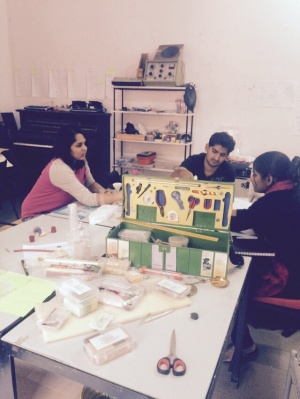 Exploring the Ekalavya Toolkit.
Exploring the Ekalavya Toolkit.
EPES DIY KIT
This page contains the DIY kit we made using the method of rapid prototyping.
It also contains links of existing DIY experiments that we researched based on the concepts we had explored while rapid prototyping.
Mapping Skills
EPES Workshopology
EPES Workshopology Discussion
Things to think about.
1. The Welcoming. Ice breaking activities?
2. Will people be coming in all the same time? or come in casually one by one?
3. Information density - How much do you tell and how much is left to figure out?
4. Issues of safety
5. Documentation - Of what? How much? (Intro, Middle and End)
6. Roles of the mentor
7. Hospitality - Food, Drinks and Music
8. Arrangement of Space
9. Continuity of the Community - giving them access to wiki? Putting up work they made up online, promote dialogue between makers?
Tips:
1. Be authentic - Don't pretend to be something you are not. Be yourself.
2. Keep calm and improvise if something doesn't go as planned.
Microrobotics Workshop
Discusssing and Prototyping the Labstudio
Seminars
EPES Seminar 1
dear students, please add your revised proposals and your presentation slides into the link above.
Date: 19. February 2015
Date: 24. February 2015
EPES Seminar 2
Date: 26. March 2015
EPES Seminar 3
Date: end of april
Suggested Readings and Viewings
Field Notes - From Landscape to Laboratory(link to teaser pdf here)
Field_Notes – From Landscape to Laboratory – Maisemasta Laboratorioon, Finnish Society of Bioart, 2013
http://bioartsociety.fi/Field_Notes_Teaser.pdf
Every second year the Finnish Society of Bioart invites a significant group of artists and scientists to the Kilpisjärvi Biological Station in Lapland/Finland to work for one week on topics related to art, biology and the environment. “Field_Notes – From Landscape to Laboratory” is the first in a series of publications originating from this field laboratory. It emphasizes the process of interaction between fieldwork, locality and the laboratory. Oron Catts, Antero Kare, Laura Beloff, Tarja Knuuttila amongst others explore the field and laboratory as sites for art&science practices.
BETWEEN LANDSCAPE AND LABORATORY
How to define the evolving field of art&science, including bioart, and where can the historical trajectory of this area within the arts be found? In very general terms one could divide currently existing artistic interests in the field into two very broad subject categories: artists that are concerned with the environment, and artists whose work focuses on the human as subject matter. The previous group deals with environment, landscape, natural phenomena, plants, and animals typically in their natural habitat. The latter group is interested in the human as such and within his technologically augmented environment. This includes work with human enhancement and organs, with devices and manipulation of human and animal cells. The work is carried out either under laboratory conditions or with technologically mediated social structures including human and non-human actors. Shared aspects across the field are e.g. politics, ethical debates and projections of the possible futures. This publication is specifically focusing on work that is concerned with the environment and ecology. However, the human is strongly present in all the arguments, statements and accounts. It is very apparent that we live in the era of the anthropocene, where viewpoints and actions are unavoidably developed with and projected from a human perspective.
The publication is edited by Laura Beloff, Erich Berger and Terike Haapoja. It is bilingual in Finnish and English and contains 17 articles and additional material of Finnish and international contributors. You can buy the book now from our website:
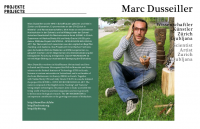
Home Made Bio Electronic Arts Do-it-yourself: Microscopes, Sensors, Sonifications - Christoph Merian Verlag / Migros-Kulturprozent: Dominik Landwehr, Verena Kuni (Ed.), 2013
http://hackteria.org/2013/05/23/home-made-bio-electronic-arts-published/
After 2 years of discussions with various people in the field of DIYbio, hackteria and BioArt, Dominik Landwehr and Verena Kuni published a new book in their HomeMade series. This time with the title “Home Made Bio Electronic Arts” they go some steps closer to interfacing the living world with DIY tinkering and electronics, easy accessible instructions for everybody. Additionally some editorial essays and an interview with Gerfried Stocker. A production by Migros-Kulturprozent with the Christoph Merian Verlag.
- Six easy do-it-yourself experimental projects
- For biotechnology and electronics do-it-yourself enthusiasts
“Science for all” is the motto of a new movement which deals with biology and electronics. It applies the do-it-yourself approach, well established in the electronic and computer scene, to natural sciences. Here the boundaries between the arts and sciences are fluid. The artists and scientists who work together in an interdisciplinary manner call themselves “bio-hackers” or “bio-punks” and deliberately continue in the creative tradition of those two movements. Their research is designed to communicate scientific insights which are otherwise reserved for scientists. Home Made Bio Electronic Arts introduces leading exponents and presents six easy do-it-yourself experimental projects.
Download the Full Book "Homemade Bioelectronic Art
Goethean Science as a Way of Knowing
Study of Atelier Tradition and Goethean Science by Artist Daan Hoekstra
Introductions to Goethe's Study of Natural Scientific works by Rudolf Steiner
Science as a Conversation with Nature by Craig Holdrege
Shop Class as Soul Craft Matthew B. Crawford An Inquiry Into the Value of Work reading is here
Beyond Black Boxes: Bringing Transparency and Aesthetics Back to Scientific Investigation http://web.media.mit.edu/~mres/papers/bbb.pdf
It looks like Fun, But are they Learning? http://tinkering.exploratorium.edu/sites/default/files/pdfs/PetrichWilkinsonBevan-ItLooksLikeFun.pdf
Rethinking Learning in the Digital Age
https://llk.media.mit.edu/papers/mres-wef.pdf
DESIGNING FOR TINKERABILITY http://web.media.mit.edu/~mres/papers/designing-for-tinkerability.pdf
Learning, Knowing and Education
Yearners and Schoolers from The Children's Machine by Seymour Papert
A Word for Learning from The Children's Machine by Seymour Papert
A Celebration of Difference: Science and Democracy in India by Shiv Vishwanathan
DIY Toys- Make Play Learn
Toying with Trash Science and Art by Arvind Gupta
Articles from the Newspaper
http://www.thehindu.com/features/metroplus/science-in-curious-lil-hands/article6834765.ece
Furter interesting links
http://www.edutopia.org/blog/creating-authentic-maker-education-rubric-lisa-yokana
Art as Intimate Science
http://noemalab.eu/ideas/essay/rethinking-art-as-intimate-science-climate-art-as-a-hard-humanity/
http://www.mitpressjournals.org/toc/leon/42/3
http://vectors.usc.edu/thoughtmesh/publish/111.php
Videos on education
http://www.educationdive.com/news/6-must-see-education-ted-talks/259756/
http://www.ted.com/talks/arvind_gupta_turning_trash_into_toys_for_learning
https://www.youtube.com/watch?v=XcxIUkzzz_c
Designerly Ways
Human Centric Design
http://www.ideo.com/images/uploads/hcd_toolkit/IDEO_HCD_ToolKit.pdf
Service Design
http://www.servicedesigntools.org/
Collective Action Toolkit by frog
http://www.frogdesign.com/work/frog-collective-action-toolkit.html
Critical Design
https://medium.com/@luizaprado/questioning-the-critical-in-speculative-critical-design-5a355cac2ca4
Co-design: some principles, theory, and practice
http://www.smallfire.co.nz/2011/05/17/co-design-some-principles-theory-and-practice/
Personas
http://interactions.acm.org/archive/view/november-december-2013/user-stories-dont-help-users-Introducing-persona-stories
https://www.interaction-design.org/encyclopedia/personas.html
Play & Games
Master of Play - an article in the New Yorker about Shigeru Miyamoto- creater of Donkey Kong, Mario bros and the Wii
http://www.newyorker.com/magazine/2010/12/20/master-of-play
further links
http://www.light2015.org/Home.html
http://www.makerfest.com/workshops/
Initiatives and Schools in Bangalore
http://www.curiouscity.org/science/
Initiatives and Schools in other parts of India
http://www.agastya.org/what/what-we-do/lab-in-a-box-lib
On the page EPES related Kits and Approaches, we can put together a compilation of similar initiatives, existing kits and discuss their implication in a local setting.
